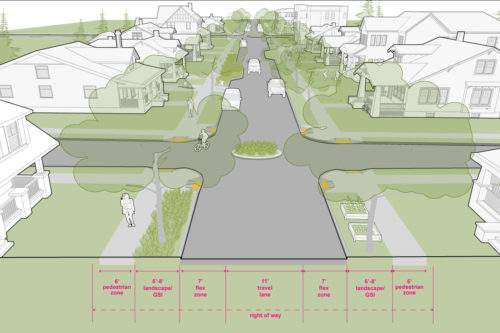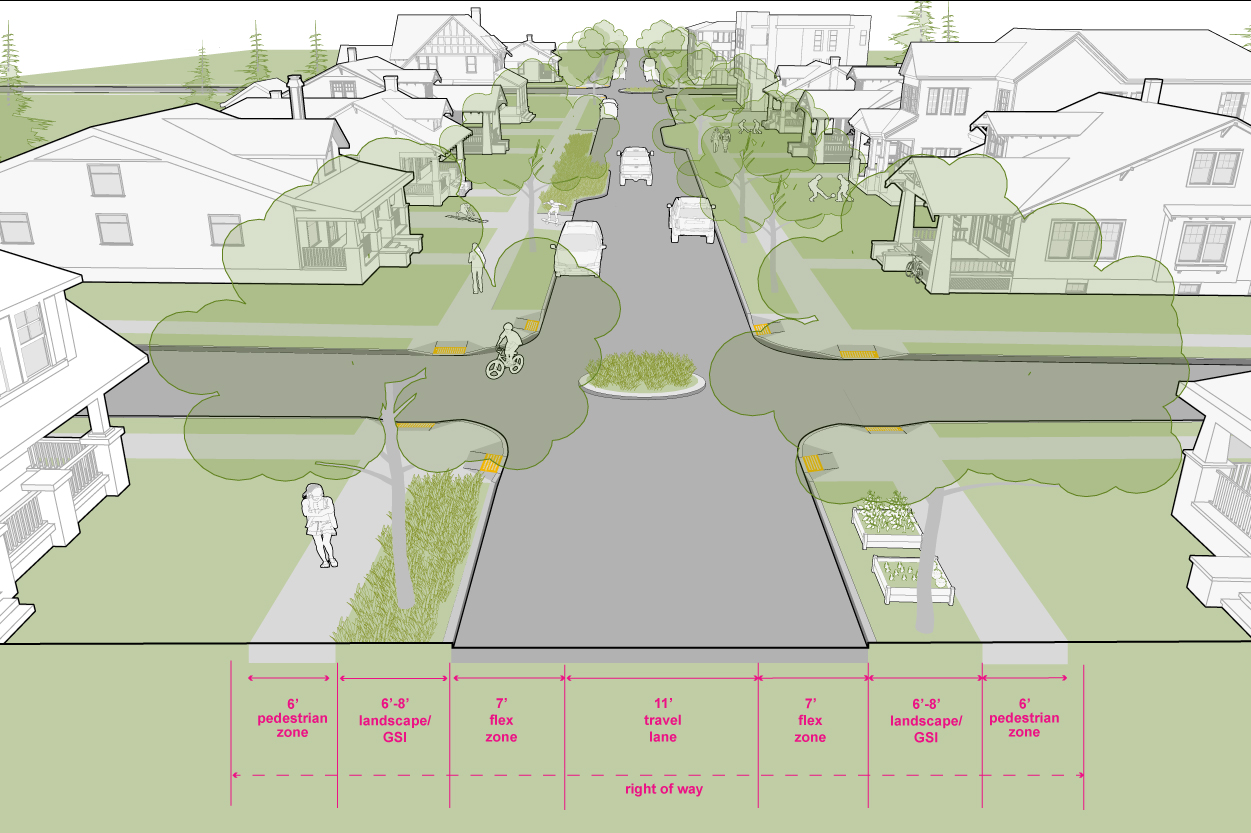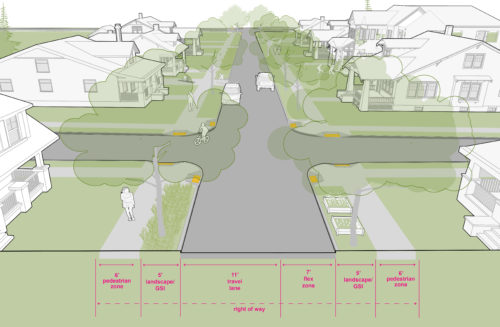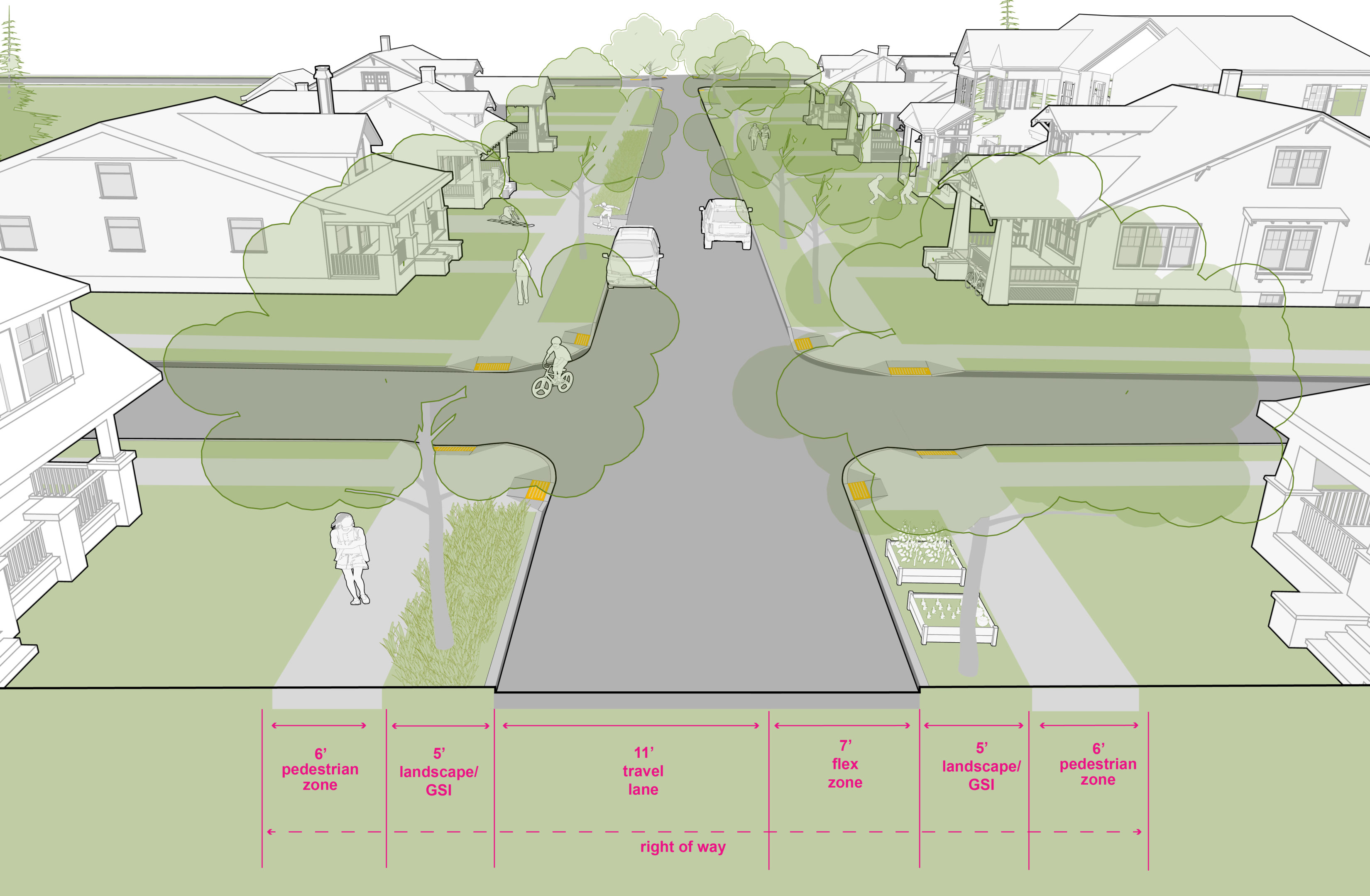2.15 Neighborhood Yield
Neighborhood Yield Streets are designed as low speed and low volume streets that provide access to residences and community amenities such as parks, schools, and gathering spaces.
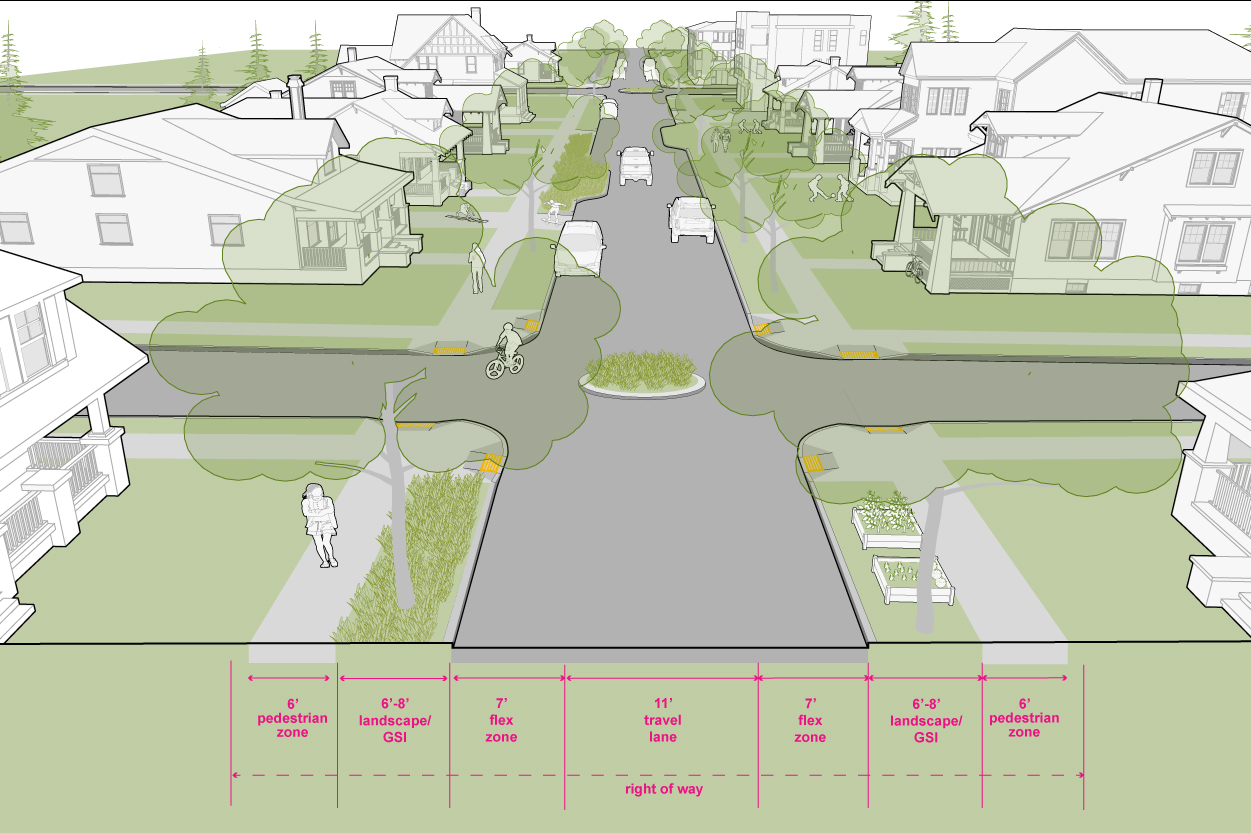
3.4 Drainage
Neighborhood Yield Streets may have Green Stormwater Infrastructure (GSI) such asbioretention cells. In bioretention, healthy soil biology, soil structure, tree and understory vegetation promote infiltration, storage, and slow release of stormwater flows to more closely mimic predevelopment conditions. Read More »
4.4 SDOT Permit Types
Gardening in the right-of-way is allowed on neighborhood yield streets and requires a street use permit. Read More »
3.12 Traffic Calming
Traffic calming is a way to design streets to improve safety, reduce the amount of cut-through traffic traveling on neighborhood streets, and generally encourage people to drive more slowly, improving neighborhood safety and livability, and improving the environment for pedestrians. Read More »
Access Easements and Driveways
Driveways and access easements provide access to off-street parking on private property using a curb cut. Read More »
These streets typically allow for single-direction vehicle movement due to the presence of on-street parking and/or traffic calming devices. Neighborhood Yield Streets have sidewalks buffered by planting strips that support a wide range of treatments including gardening, green stormwater infrastructure and large canopy street trees.
The land use code SMC 23.53.015 requires that streets with single family zoning, which is commonly the zoning of Neighborhood Yield Streets, have at least 40 feet of right-of-way. If the right-of-way is 40 feet, consider adjusting the Neighborhood Yield Street using the flex zone and the landscape/GSI zone (see Neighborhood Yield Street 40′ image).
Through the deviation process, some Neighborhood Yield Streets can also be Neighborhood Curbless Streets.
|
Typical Street Classification(s) |
|
|
Public Space Programming |
|
|
Greening |
Street trees, pervious pavement, landscaping, rain gardens, sloped or walled bioretention cells (pursuant to vertical wall policy) |
|
Pedestrian |
Low to medium vehicle volume; traffic calming helps to keep streets family friendly with less conflict at crossings and low vehicular speeds |
|
Bicycle |
Character of Neighborhood Yield streets are conducive for neighborhood greenways. |
|
Freight |
Not part of freight network, but should accommodate deliveries by SU-30. |
|
Transit |
Not typically part of transit network |
|
Loading/parking |
Parking should be provided on site or accessed from alleys if they exist. On street parking demand may be high, especially in neighborhoods without dedicated parking. Some areas may have an established Restrictive Parking Zone program. In multi-family zoning, short term parking can be restricted to accommodate loading needs. |
*Color for illustration is used to differentiate between right-of-way elements and does not represent standard color for design.

